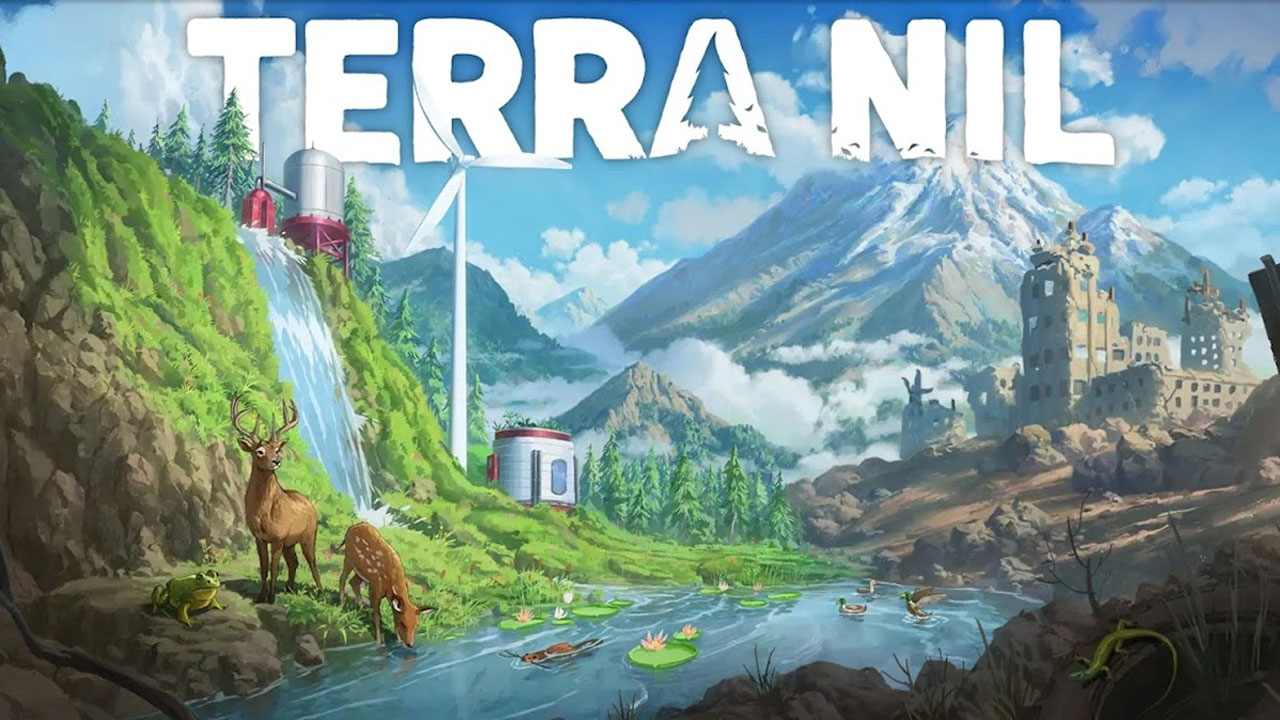
Terra Nil is a relaxing environmentalist development game that fits closer to puzzle titles rather than the city builder genre.
Players will be building numerous structures to turn a barren wasteland into a beautiful landscape of forests, rivers, and animals. The game is less about managing resources with development, and more of planning out your moves to work through the growth of each biome.
Understanding what Terra Nil is, and more importantly what it isn’t, is tantamount of getting an enjoyable experience. But even if one approaches with the right mindset, is it still an engaging title? Find out in our review!
Terra Nil
Developer: Free Lives Games
Publisher: Devolver Digital
Platforms: PC (Reviewed), Android, and iOS.
Release Date: March 28, 2023
Players: 1
Price: $24.99 USD
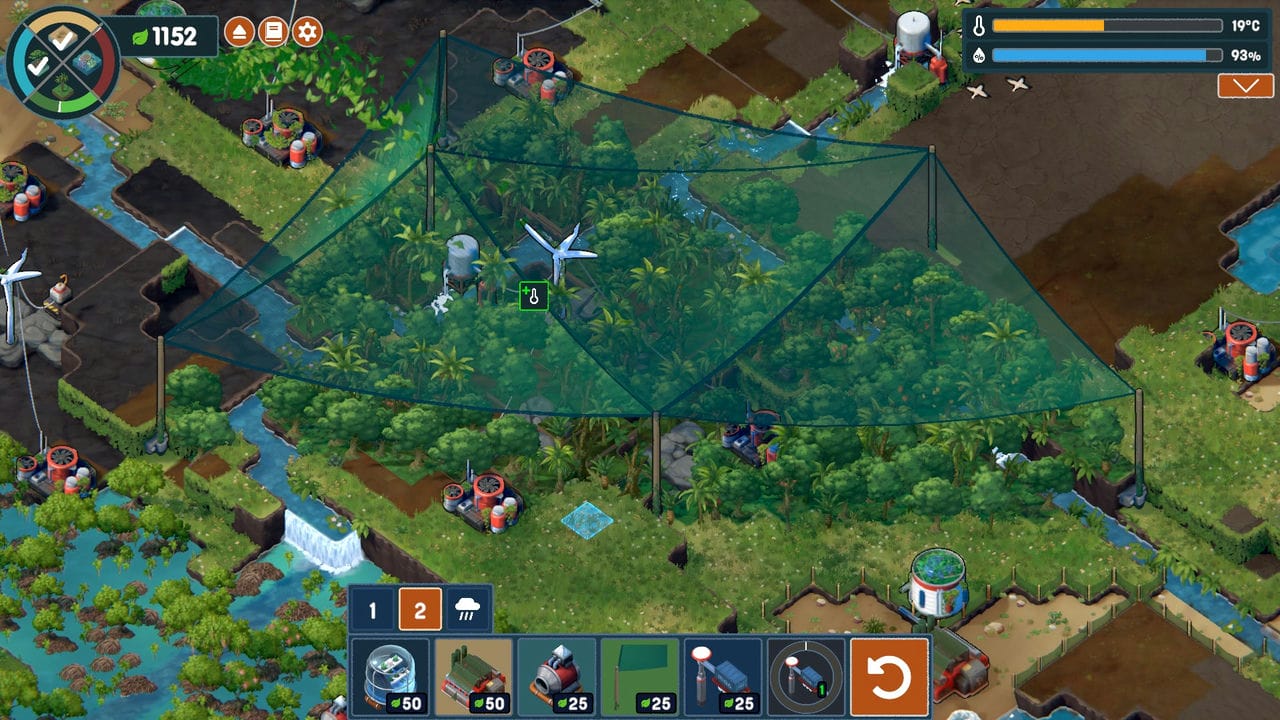
Terra Nil bills itself as a “reverse city builder.” Instead of building up a village, town, or major city – players will focus on rebuilding nature as if untouched by humanity. Though despite the marketing term, most levels do not involve taking away former human structures.
Nor is there a story in Terra Nil. There is no explanation as to why the world became such a barren wasteland, nor who your character is. The player character apparently has the means of high tech mechanisms capable of terraforming the world back to its original state.
Lack of story aside, the game prefers to spend its focus on creating a relaxing experience for the player. Music is calm to instill a sense of zen and the ambient sounds of nature take center stage. You’ll hear the water flow and thunder storm to fully immerse you into the experience.
Graphically, Terra Nil gets the job done. There’s solid contrast between the barren land versus the growth of nature as you progress in each stage. Fires burn bright, leaving behind pitch black ashes to regrow new plants and each variation of bodies of water from oceans to lagoons are distinct from one another.

The presentation comes together to provide something laid back for players looking for a game to relax, rather than more tantalizing titles tend to do. This naturally follows through in the core gameplay loop.
During each of Terra Nil’s stages, there will be a list of things to do in order to take the barren land into something more habitable for nature. They all follow the same design with “greening up the space”, introducing a variety of flora, then capping it off with finding animals and recycling your buildings.
Where this game differs from many city builders and leans closer to a puzzle game comes from the resource management and the order in which buildings are created. You’ll be extremely limited in the beginning of each stage, trying to strike a balance between expanding your reach and ensuring the land begins to grow life.
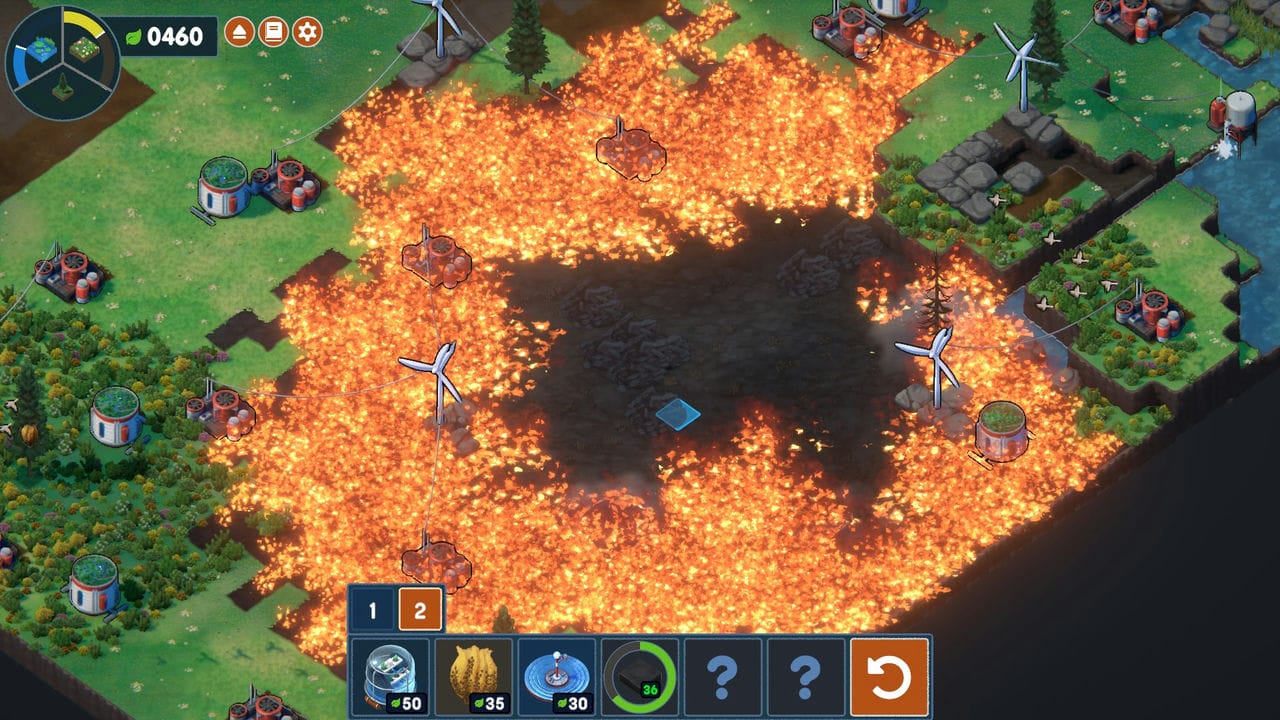
At the same time, where you place buildings will be of utmost importance in the long term. Once they’re placed, removing them is no trivial task. You actually can’t, in most levels, remove them until you reach the final phase of a stage. When you do, you need to create a plan which allows you to remove every single thing you’ve built in order to complete the level.
This forces the players to slow down and take a look of the land before building their structures. You’ll have to keep in mind your immediate needs with that of the end goal. This gives each level a sense of depth, even in their short runtime.
Terra Nil is a short game with only 4 stages representing different biomes. It’ll take most roughly 30-45 minutes to complete one from start to finish the first time around. So the total game ends up taking only a handful of hours.
While each stage does have an alternate version upon completing the main game, they all are also procedurally generated to keep things somewhat fresh on replays. However, each different stage still follows the same core principles every time.
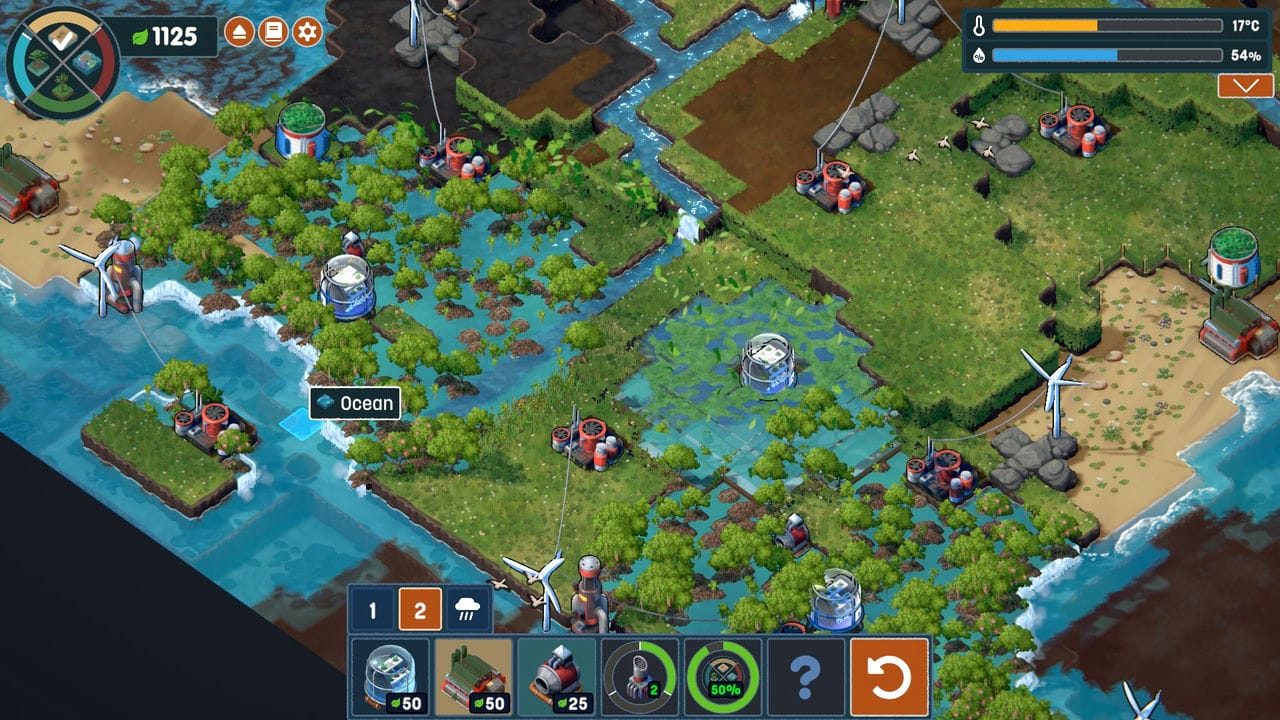
Which brings about Terra Nil’s greatest weakness. It’s a short experience with little reason to come back to it when everything’s said and done.
There are many accomplishments to aim for, such as 100% completing each stage and their alternatives. It somewhat goes against the general vibe the game goes for in creating a relaxing experience, where you’re now micromanaging every little detail to succeed.
The main enjoyment after beating the game is targeted towards the rather niche audience Terra Nil aims for. These are the type of people who want to experience that “zen” while playing a video game with simple mechanics and a calming atmosphere.
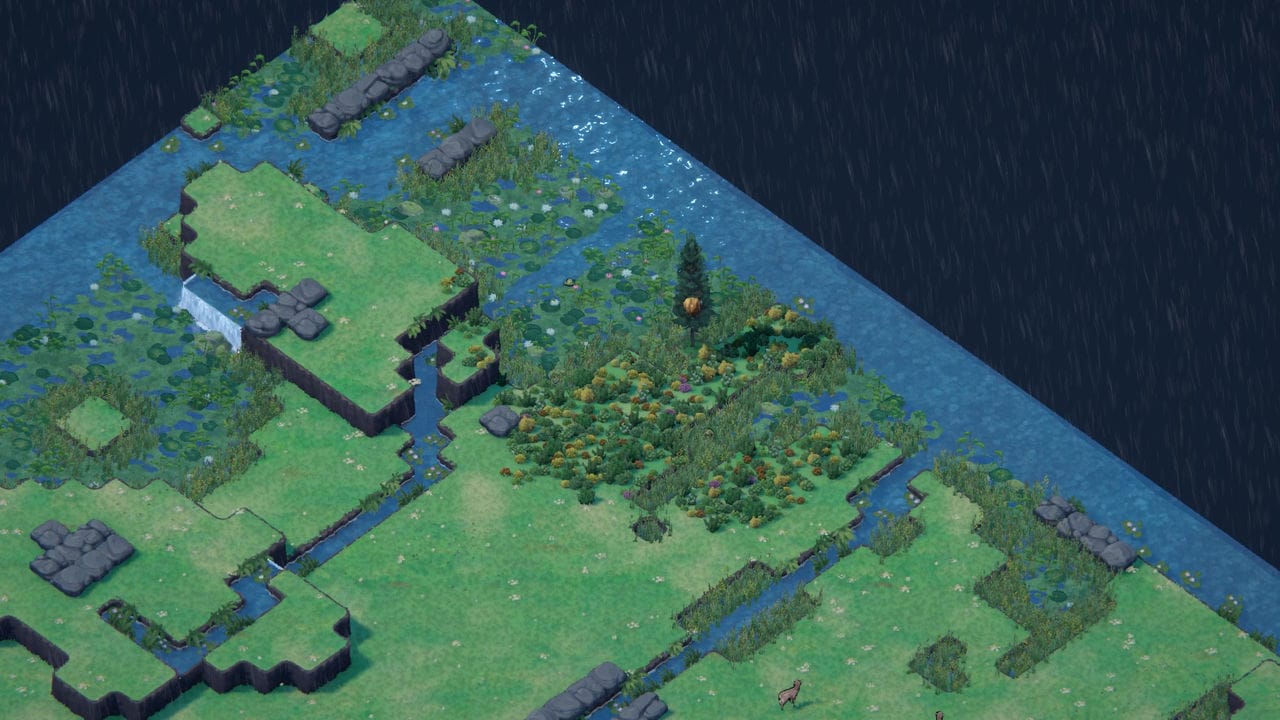
When it comes to this concept, they’ve squarely hit the mark. Fans of this style of game will find all the hallmarks done in all right ways. Peaceful music, soothing sounds of nature to immerse themselves, and gameplay that doesn’t push anyone’s minds too hard.
There’s even a sense of satisfaction when a structure is created, turning tiles of nothingness into a place filled with life. Players will be able to achieve those “aha” moments when they figure out how to create beautiful landscapes.
It’s all wonderfully topped off once you remove all the machinery and high end technology to see what you’ve created in its purest form. The game does allow you to take as long as you wish to bask in the sights. It would’ve been better if there were a way to compare the before and after.

Is Terra Nil worth it despite its short length? For most people, no. Only those who were already interested in the game for its aesthetics and genre will likely enjoy this game to its fullest extent.
But even for them, there are some glaring limitations that can’t be overlooked no matter how hard one tries. Especially considering the relatively steep price tag for something as simple and short as this.
Terra Nil is good for what it is, but it doesn’t go beyond that in any meaningful way.
Terra Nil was reviewed on PC using a code provided by Digital Devolver. You can find additional information about Niche Gamer’s review/ethics policy here. Terra Nil is available now on PC (via Steam, GOG, and Epic Games Store), Android, and iOS.